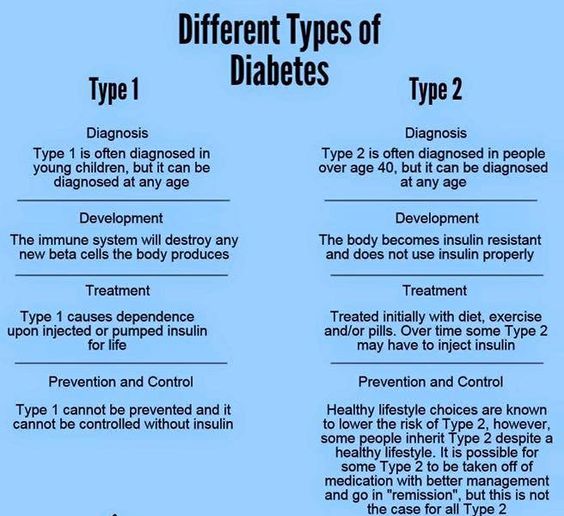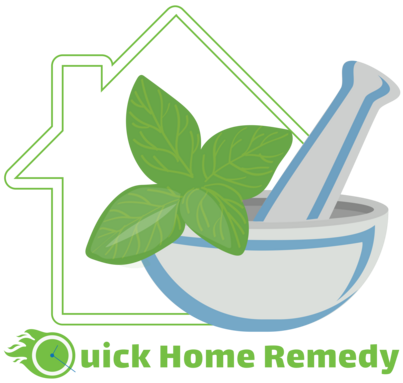Diabetes is a serious health disease in which the ability of the body to produce or respond to insulin is impaired. Insulin is a hormone in the body and when the body fails to produce or respond to insulin, it can elevate blood sugar levels or cause abnormal metabolism of carbohydrates.
Today, most of the people worldwide are suffering from diabetes. It can affect children, adults and old aged people. Diabetes is a lifelong disease, and if you encounter any signs of diabetes, then you must make efforts to get a proper cure. It’s too dangerous. However, it can be managed and cured with a proper diagnosis on time and regular attentive treatment. There is generally two types of diabetes but many of us don’t even know about it. So let’s know the difference between Type 1 and Type 2 Diabetes, symptoms and cures in detail.
Type 1 and Type 2 Diabetes
TYPE 1
In type 1 diabetes which is also known as insulin-dependent diabetes and juvenile-onset accounts to 5 to 10 out of 100 people. It is commonly diagnosed in children. In type 1 the body immune system destroys the cells that release insulin. The cells of the body that releases insulin are destroyed by the immune system of the body and eventually the insulin production of the body is eliminated completely.
Type 1 diabetes Symptoms includes an increase in thirst and hunger, frequent urination, weight loss, headache, nausea, fatigue, blurred vision, dry mouth, dehydration, infection of the skin, etc. Some signs of emergencies are rapid breathing, shaking and confusion, belly pain, lack of consciousness and fruity smell in the breath.
Doctors are still not aware of what causes type 1 disease, but they say that genes play an important role. So, the cause is usually genetic, but Type 1 disease can occur along with other autoimmune diseases. There is no way to prevent type 1, but people suffering from type 1 live a healthy and longer life. The key is to keep a check on blood sugar levels at regular intervals and use insulin injections to control it. Food, insulin levels and other activities have to be adjusted accordingly.

TYPE 2
Type 2 diabetes is a progressive condition where the body becomes resistant to insulin and it doesn’t allow your body to make or utilize the insulin well. In this condition, the can not use blood sugar to make energy. Gradually the capacity of the body to produce enough insulin in the pancreas is reduced. Without enough insulin, the glucose remains in your blood. You can likewise have pre-diabetes. This implies your glucose is higher than typical, yet not sufficiently high to be called diabetes. Having pre-diabetes puts you at a high risk of getting type 2 diabetes.
The pancreas in the body makes a hormone called insulin. Insulin lets your cells turn glucose from the food you eat into energy. People with type 2 diabetes make insulin, but their cells don’t use it as well as they should. This is an ethnicity problem; People who are more than 45 years old suffer from type 2 disease.
The Symptoms of Type 2 Diabetes is usually normal like fatigue, increase in appetite, weak vision sightedness or even frequent urination during the night. You may have cuts that will heal slowly, get mood swings, itching and skin infections as well.
Type 2 diabetes caused by over-weight, drinking a huge amount of soda, consuming foods and drinks with extra preservative sugar, lack of productivity, exercise, increasing amount of stress hormones etc, and sometimes it happens because of genetic issue.
Although the symptoms in both type 1 and type 2 are the same, there is a difference between both of them. Usually, it is not clear to many people as to what is the difference between both. So for your better understanding, we will discuss the major difference between Type 1 and type 2 Diabetes. They are-
- Type 1 is often diagnosed in childhood whereas a type 2 is often diagnosed at the age of 30 or more.
- Type 1 diabetes is not associated with excess body weight, but in type 2 it is associated with excess body weight.
- Type 1 is often treated with Insulin injections and Insulin pump, whereas type 2 is usually treated without medication or with tablets initially.
- Type 1 has a problem that it can’t be treated or controlled by without taking Insulin, but type 2 is very difficult to be cured. However, sometimes it is possible to come off diabetes medication in type 2.
HOME REMEDIES FOR DIABETES:
BITTER GOURD
Bitter gourd is a vegetable which is helpful in controlling both type 1 and type 2 diabetes. It tends to influence glucose metabolism all over the body rather than a particular organ or tissue, but it cannot be used to entirely replace insulin treatments.
Drink some bitter gourd juice on an empty stomach each morning. This procedure must be followed for at least 2months.
Preparation: Take the bitter gourd and wash it. Remove the seeds. Cut it in small pieces and add some water to it. Grind it and then drink.
*One can include any dish made with bitter gourd in daily diet*.
CINNAMON
It is only helpful in preventing type-2 diabetes. Powdered cinnamon has the ability to lower the sugar levels by stimulating insulin activity because it contains bioactive components which help to prevent and fight diseases.
*Drink one cup or warm water filled with one or half teaspoon of powdered cinnamon.
*Cinnamon can also be added to beverages, smoothies and baked products.
INDIAN GOOSEBERRY (AMLA)
It is Rich in vitamin C and a powerful herb in Ayurveda. Amla has also been recommended by doctors for chronic conditions and for diabetes especially. Amla juice promotes proper functioning of the pancreas.
- Take two to three Indian gooseberries, remove the seeds and grind it into a fine paste. Put the paste in a cloth and squeeze out the juice. In one cup of water mix two tablespoons of the juice and drink it daily on an empty stomach.
- Alternatively, mix one tablespoon of Indian gooseberry juice in a cup of bitter gourd juice and drink it daily for a few months. It will control blood sugar levels.
BLACK PLUM OR INDIAN BLACKBERRY (JAMUN)
Black plum is a seasonal fruit and is very useful in type 2 diabetes. It works against Diabetes Symptoms and converts sugar into energy. It is also good for the digestive system because of coolant features. The steps of using it:
Separate the seeds from fruit: Step-1
*Clean fruits and keep it in a medium-sized container
*Squeeze out the seeds with your fingers to remove the flesh and store it in a different container. Now, wash the seeds to remove any left flesh to clean out.
*Make a smoothie with seedless fruits and enjoy.
Step-2: Sun-Dry the seeds.
*Take a clean cloth and spread the seeds in it. Keep in sunlight for drying so that its outer shell becomes loose and is easy to peel.
Step 3: Peel the outer shell
Once the outer shell becomes dry, it can be peeled very easily. Collect the green inner core of the seeds.
Step 4: Dry the inner core
The green inner core can easily be broken into pieces by pressing it with your fingers, which accelerates the drying process. Keep them in sun for few more days till they are completely dried.
Step 5: Make the powder
- Using a mixture-grinder, powder the dried seeds.
- Sieve the crushed seeds.
- Till most of the dried seed powder passes through the sieve, repeat crushing and sieving few more times
- Do not throw away the remains. You can mix them with the sieved powder.
- Store the powder in the airtight container.
Consume 3 grams or half teaspoon of this powder early morning with a glass of water on an empty stomach. This remedy is ideal for type 2.
FENUGREEK
It is helpful in preventing Type 1 diabetes as well as type 2. It improves glucose tolerance and lowers the blood sugar levels due to its hypoglycemic activity. It is so high in fibres by which it slows down the absorption of carbohydrates and sugars.
- Soak two tablespoons of fenugreek seeds in the water overnight and drink that water along with the seeds in the morning to bring the glucose level down.
- One can also eat 2 tablespoons of powdered fenugreek seeds daily along with milk.
MANGO LEAVES
Mango leaves are very helpful in maintaining insulin levels in the blood cells. The method to use it is:
- Take 10-15 mango leaves, put it in a glass of water and let it be soaked for the whole night.
- In the morning, take that water, filter it and take it before eating anything else.
- The powder can be made of mango leaves by using a grinder. Take one and a half spoon daily for best results.
GUAVAS
Guava is very beneficial for diabetic patients. It maintains a balanced level of glucose in the blood. Guavas are enriched in fibres and it gives Vitamin C to the body. It is helpful in type 1 and types 2 diabetes both.



